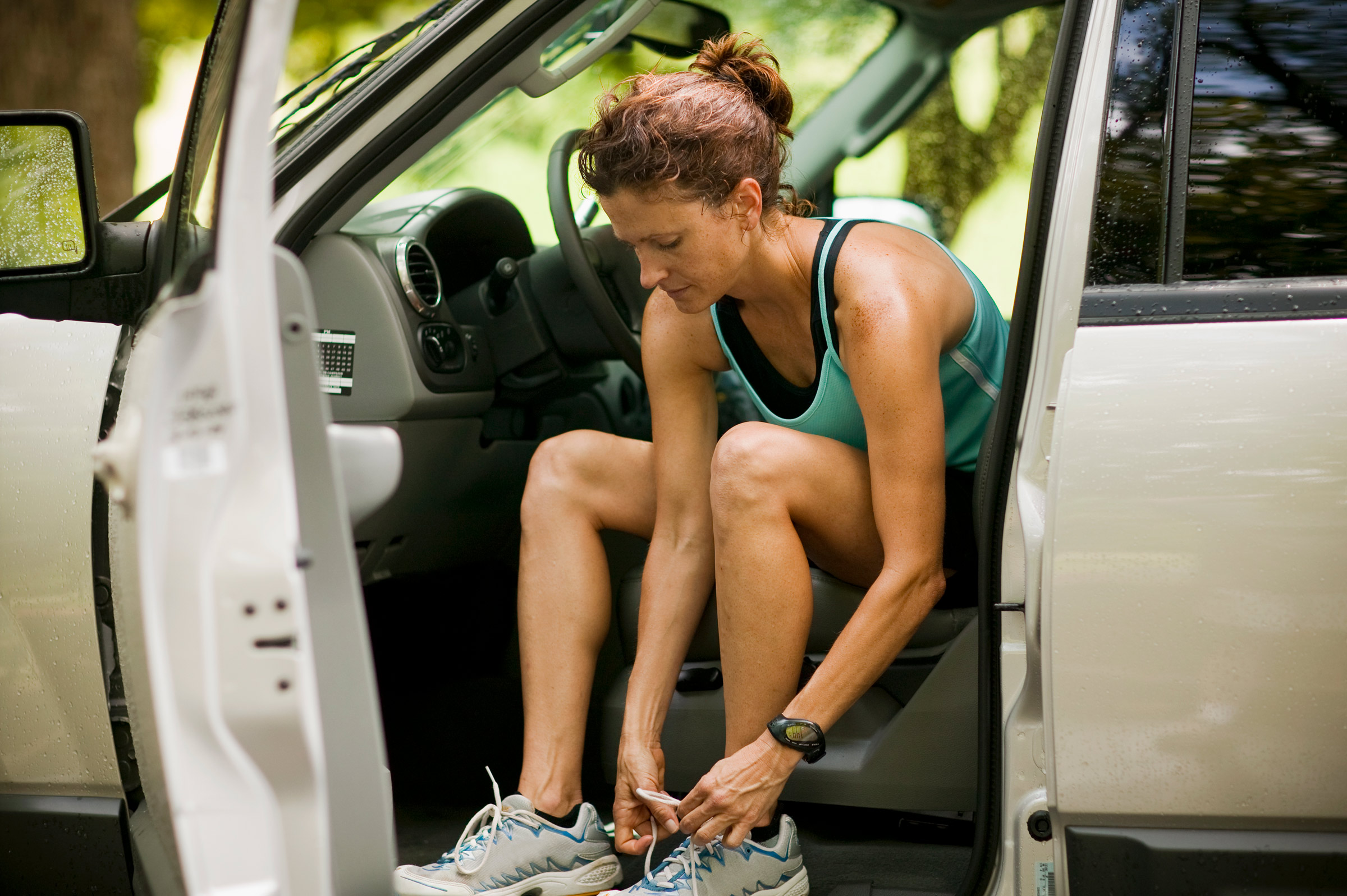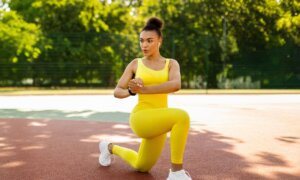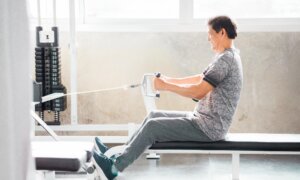Road trips can be enjoyable, and the payoff often involves arriving at a vacation destination or visiting family and friends.
Long drives present several challenges, not the least of which is the physical toll they can take on your body. Hours spent seated can leave even the most agile among us feeling stiff and walking awkwardly upon arrival. For those with conditions such as arthritis, this discomfort can be compounded.
Beyond the physical strain, the monotony of uninterrupted driving can also lead to mental fatigue, making it difficult to stay alert and focused. This increases the risk of drowsiness, a dangerous state that significantly heightens the likelihood of an accident.
Thankfully, performing these exercises can make a long road trip less arduous and more comfortable. By incorporating regular stretches and movement breaks, you can maintain better circulation, reduce the risk of joint stiffness and aches, and enhance overall alertness, ensuring a more pleasant and safe journey.
While passengers can easily do these exercises, drivers must exercise caution. It’s best to do these when your vehicle is not moving—unless, of course, you’re auditioning for a stunt role in Hollywood.
While these exercises work well for my patients, it’s best to consult your medical provider if you have specific health concerns.
5 Exercises for Long Drives
1. Foot Slides
Foot slides are a great way to start loosening up during long car rides. These simple exercises primarily target your knee joints and thigh muscles, offering an easy and effective way to stay limber.
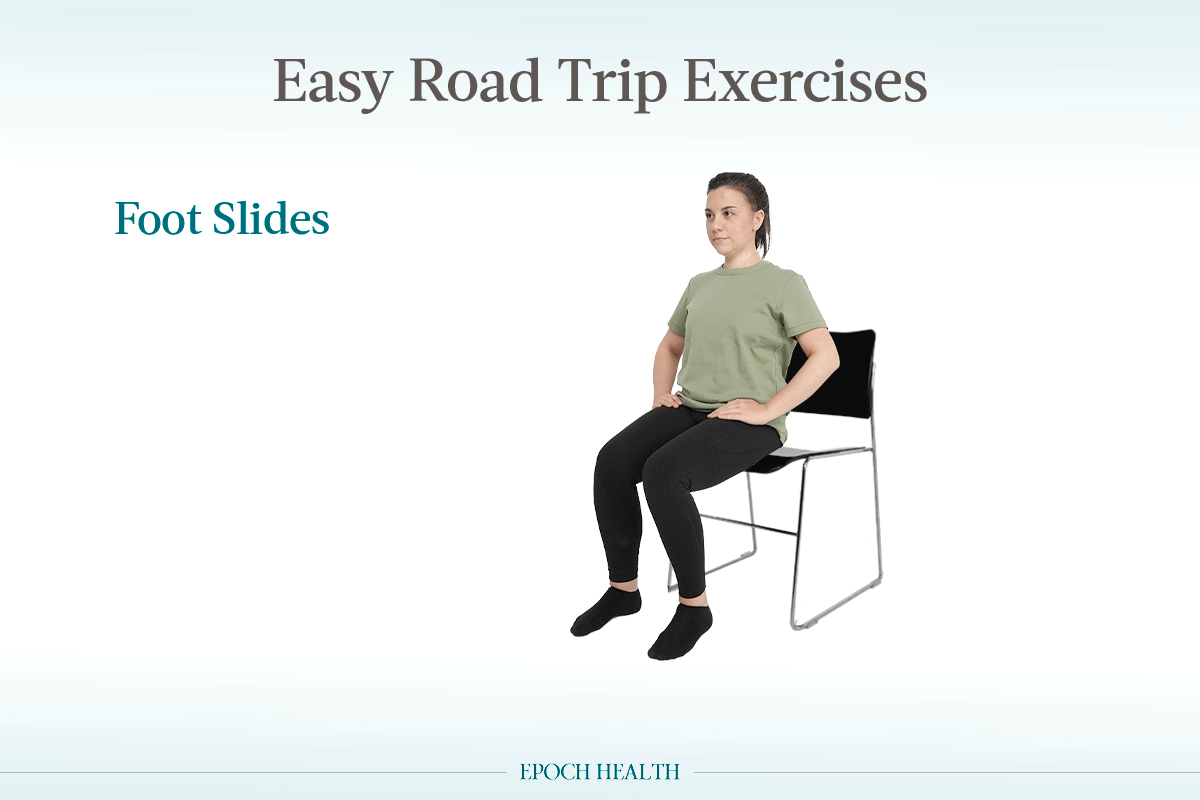
(Chung I Ho/The Epoch Times)
Step 1: While sitting (since standing inside a car is rather difficult), place your feet side-by-side without touching.
Step 2: Slide your right foot forward as far as you can. Adjust your chair back a bit to maximize your foot’s range of motion. Bring your right foot back, then repeat the movement with your left foot.
Step 3: This counts as one repetition. Try to perform three sets of 20 repetitions.
This exercise is simple and effective. It’s a great way to get your body moving and feeling more agile.
2. Seated Marches
Seated marches focus on the knees while providing some flexion and extension for the hips. This exercise is particularly beneficial for the hip joints, which love to stiffen up during long drives, making walking to the gas pump or restroom more challenging.
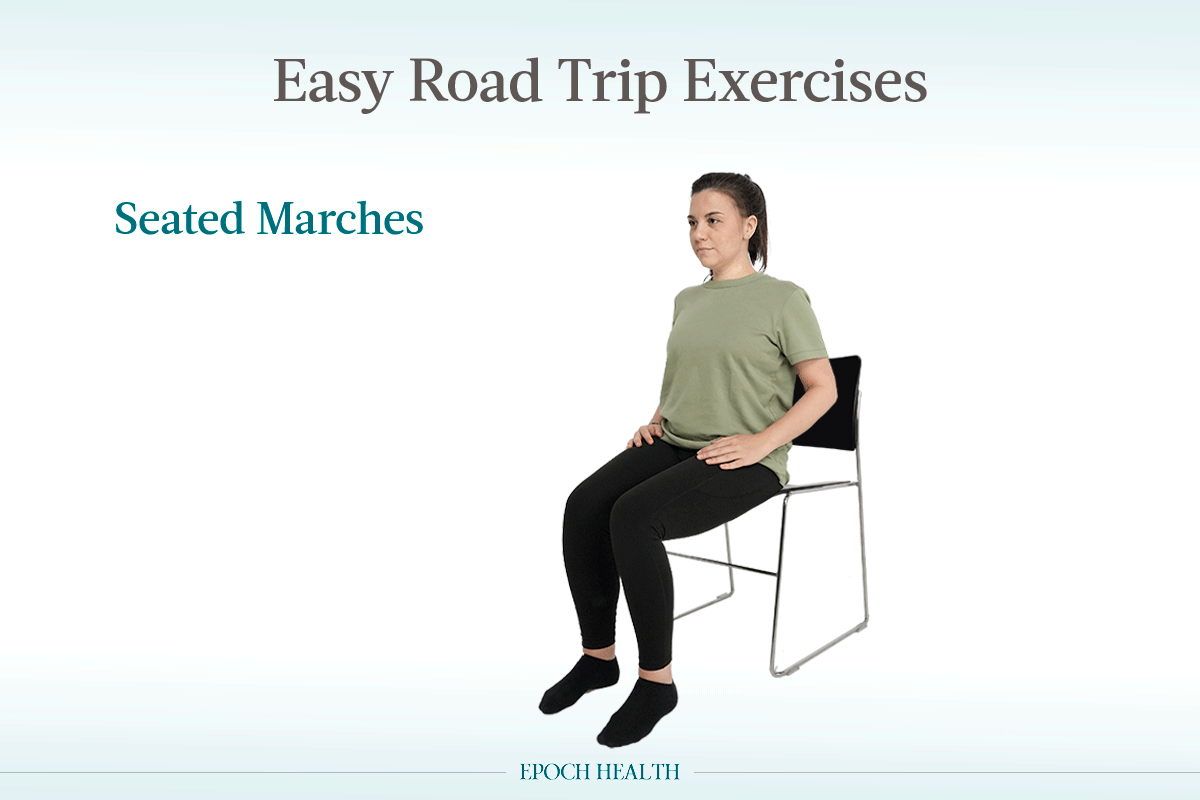
(Chung I Ho/The Epoch Times)
Step 1: Start in a seated position with your feet slightly apart.
Step 2: Slowly march in place, being sure to bring your knees up as high as you can, which is easy for passengers but harder for drivers. Take one to two seconds for each step.
Step 3: March for two minutes per set and try to do three sets. Adjust your speed as needed, alternating legs or focusing on one leg at a time.
Seated marches emphasize hip flexion and extension, helping reduce stiffness and improve mobility, ensuring you stay agile and comfortable throughout your journey.
3. Knee Swings
Next, let’s move to lateral hip movements. The knee swing builds on the previous exercise’s slight hip flexion and extension by adding abduction and adduction. Keeping the foot in the same spot introduces a small external/internal rotation component.
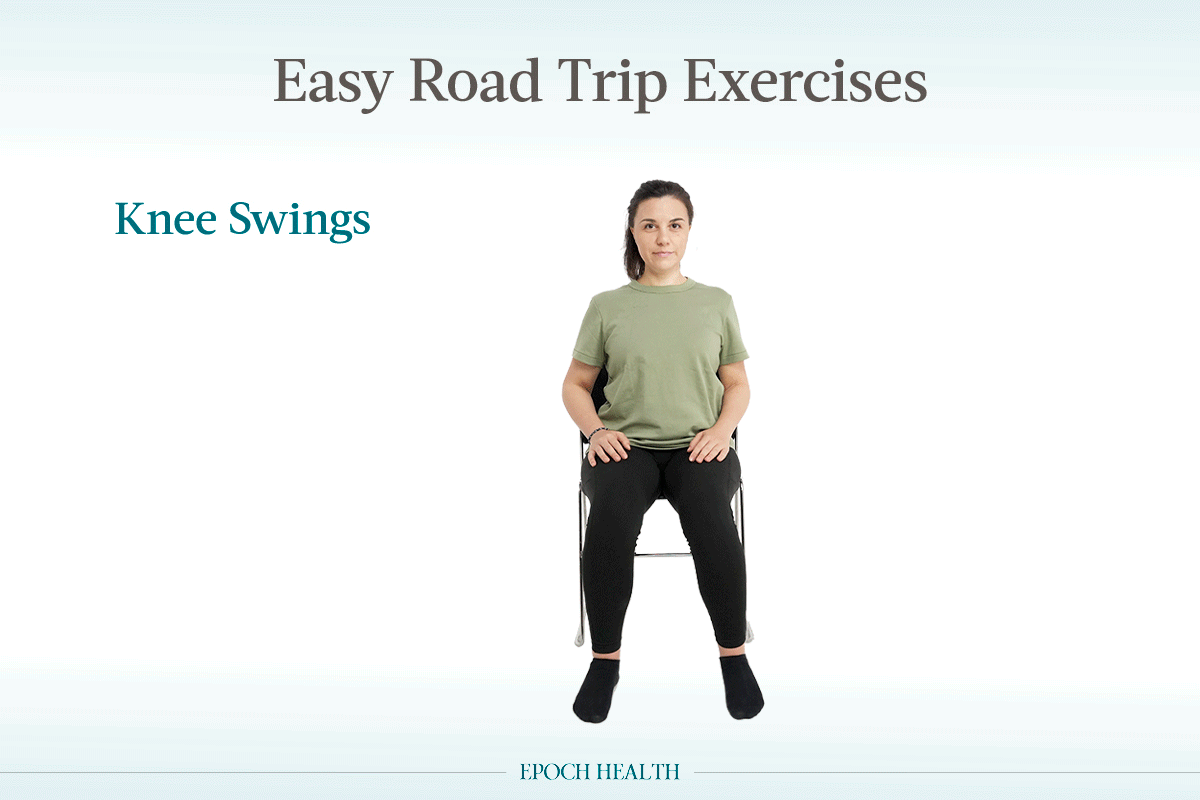
(Chung I Ho/The Epoch Times)
Step 1: While seated, place your feet side-by-side without touching.
Step 2: Move your right leg to the right as far as you can while keeping your foot planted in the same spot on the floor. Swing your leg to the left as far as you can. Return to the starting position and repeat the movement with your left leg.
Step 3: This counts as one repetition. Try to do three sets of 20 repetitions.
You can perform all movements on one side before switching to the other or alternate between legs.
4. Headrest Stretches
Now that the lower body is limbered up, let’s move to the shoulders and trunk. This easy exercise involves shoulder flexion and extension.
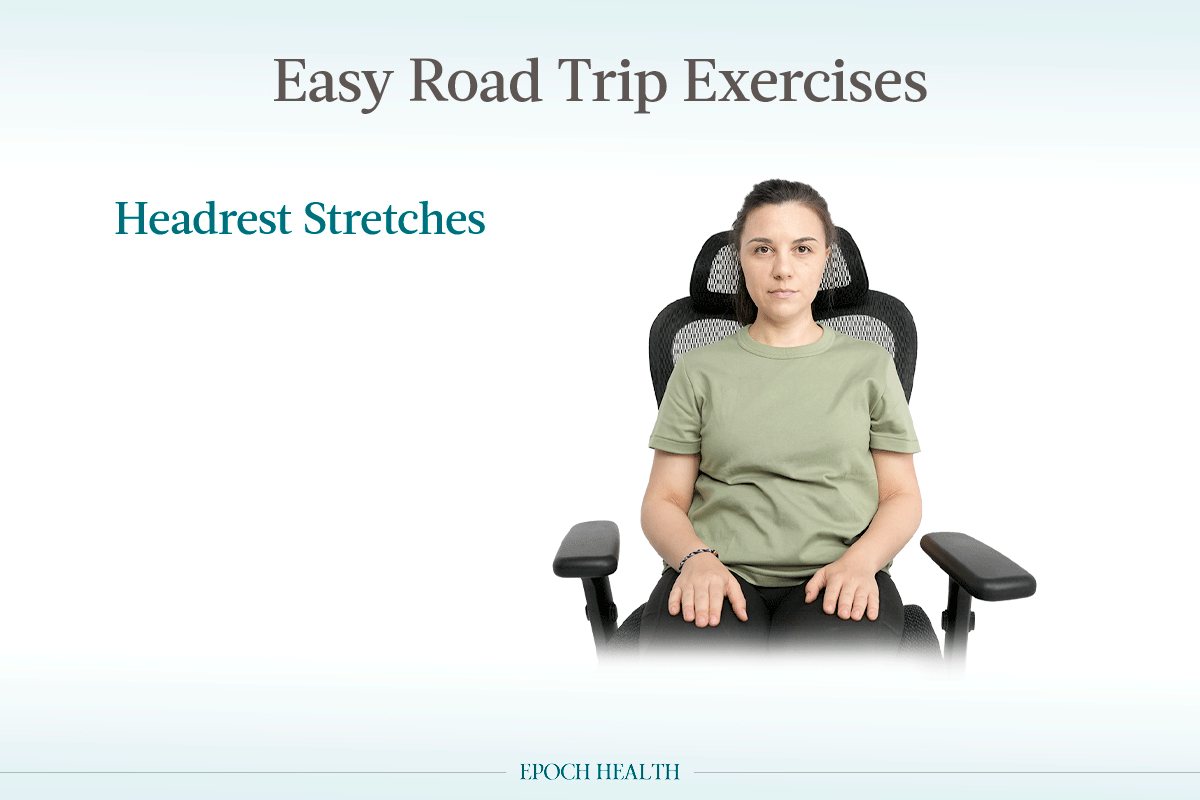
(Chung I Ho/The Epoch Times)
Step 1: Sit back as far as possible in your seat with your shoulders pressed firmly against the backrest.
Step 2: Reach across your chest with your right hand and touch the headrest while you push into the seat with your back. Reach as far as you can, with the understanding that shorter riders and drivers may only be able to reach the bottom of the headrest. If you can’t reach the headrest, you can touch the top of your shoulder.
Step 3: Hold the movement for 10 seconds, then lower your right arm and repeat the movement with your left arm.
Step 4: Reaching up and lowering your arm counts as one repetition. Try to complete three sets of 12 repetitions per arm.
Feel free to play around with sets and repetitions. For example, some people prefer to do fewer reaches with longer holds. Just be sure to straighten your upper spine as much as possible by pushing into the seat with your scapulae.
5. Trunk Rotations
Finally, let’s move to your spine, which has been patiently waiting for its turn. Trunk rotations provide a good left/right rotational stretch for your spine, allowing you to exercise the middle of your body in addition to your hips and shoulders.
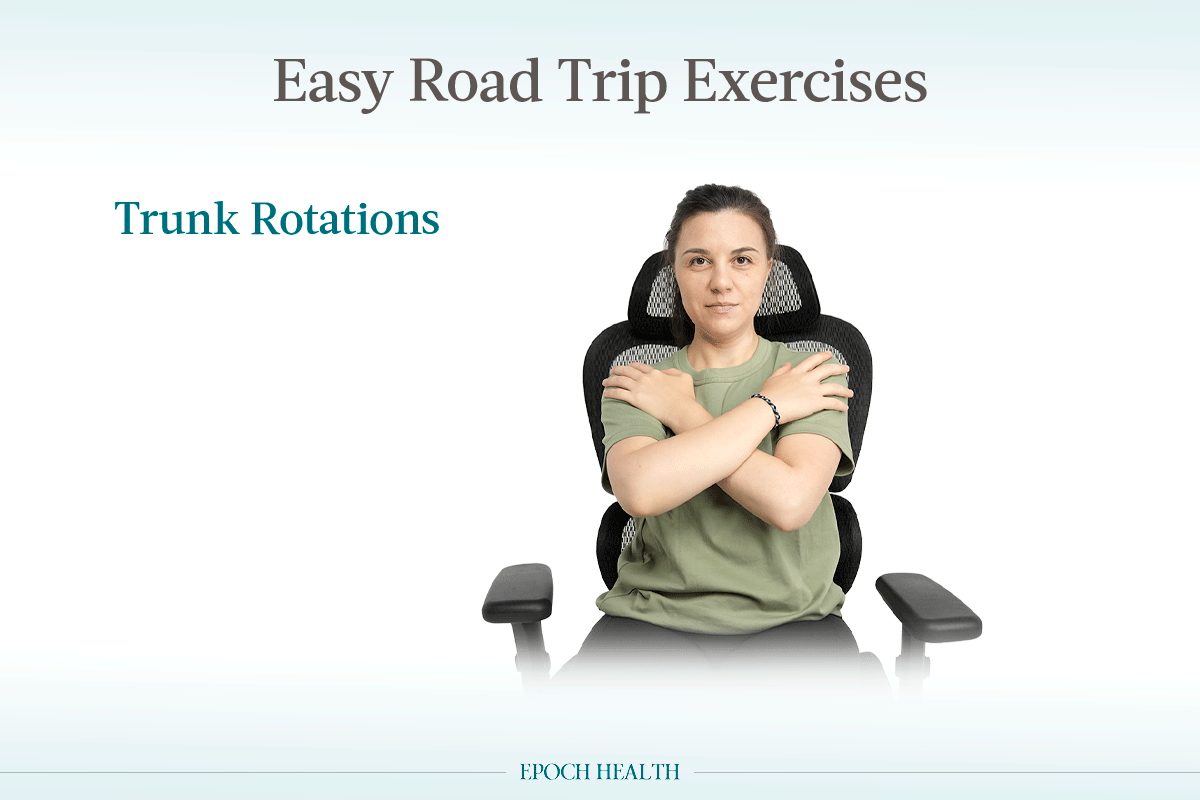
(Chung I Ho/The Epoch Times)
Step 1: Cross your arms high and hold onto your shoulders.
Step 2: Rotate to the right as far as you can while keeping your back in contact with your chair, then return to your starting position.
Step 3: Repeat the movement but rotate to the left.
Step 4: This counts as one repetition. Try to perform three sets of 20 repetitions on both sides.
For this exercise, I recommend rotating to the left and then the right rather than performing them on one side and then the other. The fuller movement sweeps are more beneficial, as they engage a wider range of motion, helping to stretch and strengthen the muscles more effectively.
Long drives always impose a unique set of challenges, but incorporating these exercises can help you stay limber and comfortable, even though they may not help you get there any faster. Remember to take regular breaks to stretch and move around, which will help manage stiffness and maintain alertness. Good luck and safe driving!





